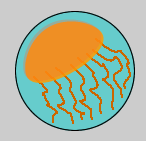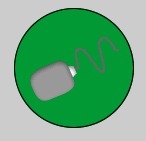



Achieving Propulsion
The physical principles described in the Principles section can be utilized in a variety of ways to achieve one or more of the objectives of propulsion (transportation, pursuit, or elusion) described in the Objectives section. As a result, a wide variety of propulsion systems appear in both the mechanical and biological worlds. Each of these propulsion system “realizations” or “designs” has a unique way of employing physical principles toward a propulsion objective. Naturally, some systems are better suited for certain objectives than others, requiring a tradeoff based on which objectives are most important to the user. To understand the tradeoffs and how changes in propulsion systems lead to improved or degraded performance it is helpful to consider examples of propulsion systems.
For purposes of discussing their basic features, examples of propulsion system design are grouped into three categories. Click on one of the following to learn about propulsion systems in each category. At the conclusion of each category, you will be returned to this page so you can continue exploring. When finished, don't forget to take the quiz at the bottom of this page.
 |
Mechanical Propulsion: This section discusses propellers and jet engines. |
 |
Biological Propulsion: This section discusses the basic features of fish and bird propulsion. |

|
Biomimetic and Bioinspired propulsion: This section discusses several examples studied in laboratory settings. |

|
Review Quizzes |
